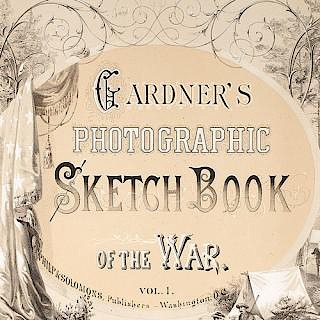Confederate Broadside Issued by James B. Clay, October 1862
About Seller
6270 Este Ave.
Cincinnati , OH 45232
United States
With offices in Cincinnati, Cleveland and Denver, Cowan’s holds over 40 auctions each year, with annual sales exceeding $16M. We reach buyers around the globe, and take pride in our reputation for integrity, customer service and great results. A full-service house, Cowan’s Auctions specializes in Am...Read more
Two ways to bid:
- Leave a max absentee bid and the platform will bid on your behalf up to your maximum bid during the live auction.
- Bid live during the auction and your bids will be submitted real-time to the auctioneer.
Bid Increments
| Price | Bid Increment |
|---|---|
| $0 | $25 |
| $500 | $50 |
| $1,000 | $100 |
| $2,000 | $250 |
| $5,000 | $500 |
| $10,000 | $1,000 |
| $20,000 | $2,500 |
| $50,000 | $5,000 |
| $100,000 | $10,000 |
About Auction
Nov 21, 2014 - Nov 22, 2014
Cowan's Auctions dawnie@cowans.com
- Lot Description
Confederate Broadside Issued by James B. Clay, October 1862
Printed broadside issued by Henry Clay's son, Lt. James B. Clay, in which he makes a plea for Southern sympathizers to defend their homes from Yankee invasion. Lexington, KY. October 9, 1862. 9 x 12 in., framed, 11.25 x 14.5 in. Apparently this broadside was kept by a Confederate soldier, perhaps as a "souvenir." At the top, From David Griffith, Co. C 5 Regt. is written in period ink. Griffith was a member of the 5th Kentucky Infantry, and he was mustered out on October 20, 1862.
James Clay (1817-1864) became owner of Ashland, his father's estate, after Henry Clay died in 1852. The mansion was in serious disrepair, and Clay rebuilt the home following his father's original floor plan as a memorial to him. In February 1861, Clay was selected to represent Kentucky at the Peace Conference in Washington, D.C. The Conference failed as an effort to ward off war, and when Fort Sumter was fired upon, Clay allied himself with the Confederacy. Lexington had both Union and Confederate sympathizers. Clay, fearing that there might be repercussions against his family and himself, decided to flee further south in August 1861. He was captured in Garrard County, KY, before he could get out of the state and was imprisoned for a short time. As the Confederates were victorious during the first year of the year, Clay returned home to Ashland and kept a low profile. Confederate troops seized control of Lexington by the summer of 1862. It was time for Clay to take action. He was asked to raise troops for General Braxton Bragg, and thus this broadside was printed in an effort to raise men for a regiment of infantry.
The broadside's date, October 9, 1862, is very significant because it was on October 8 that Bragg was routed at the Battle of Perryville and Confederate forces were expelled from the state. Clay, now recognized as a Confederate officer, had to make his escape and arrived in Cuba by Christmas. Early in 1863, Clay went to Montreal where many Confederate ex-patriots had relocated. Unfortunately, by this time, Clay had become ill with tuberculosis, and his family rented Ashland to relatives so they could join him in Canada. He died in Montreal in January of 1864, never to see the memorial he built for his father again.Various age spots and a few holes, but in good condition, with a tremendous amount of character.Condition
- Shipping Info
-
SHIPPING. At the request of the buyer, Cowan's will authorize the shipment of purchased items. Shipments usually occur within two weeks after payment has been received. Shipment is generally made via UPS Ground service. Unless buyer gives special instructions, the shipping method shall be at the sole discretion of Cowan's Auctions, Inc.. Cowan's is in no way responsible for the acts or omissions of independent handlers, packers or shippers of purchased items or for any loss, damage or delay from the packing or shipping of any property.
-
- Buyer's Premium



 EUR
EUR CAD
CAD AUD
AUD GBP
GBP MXN
MXN HKD
HKD CNY
CNY MYR
MYR SEK
SEK SGD
SGD CHF
CHF THB
THB



